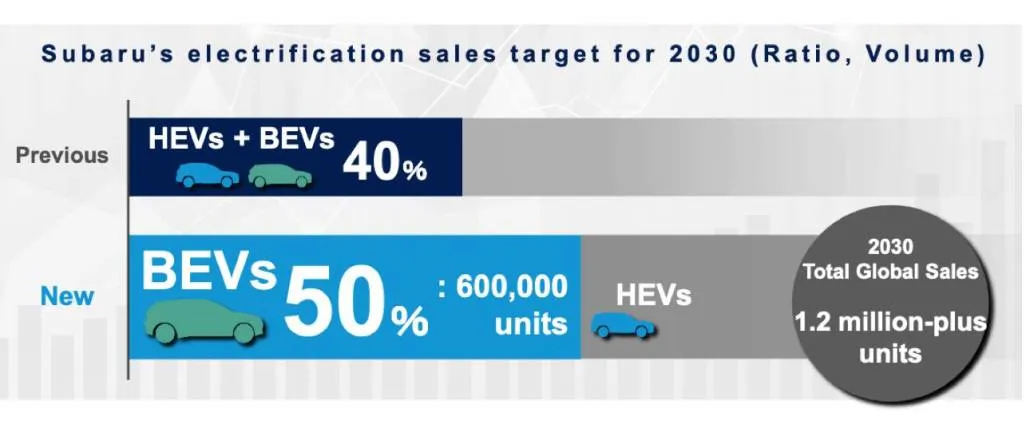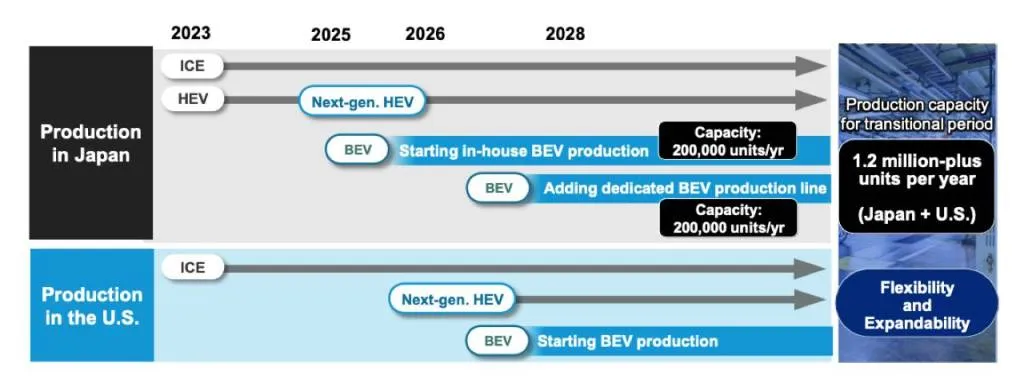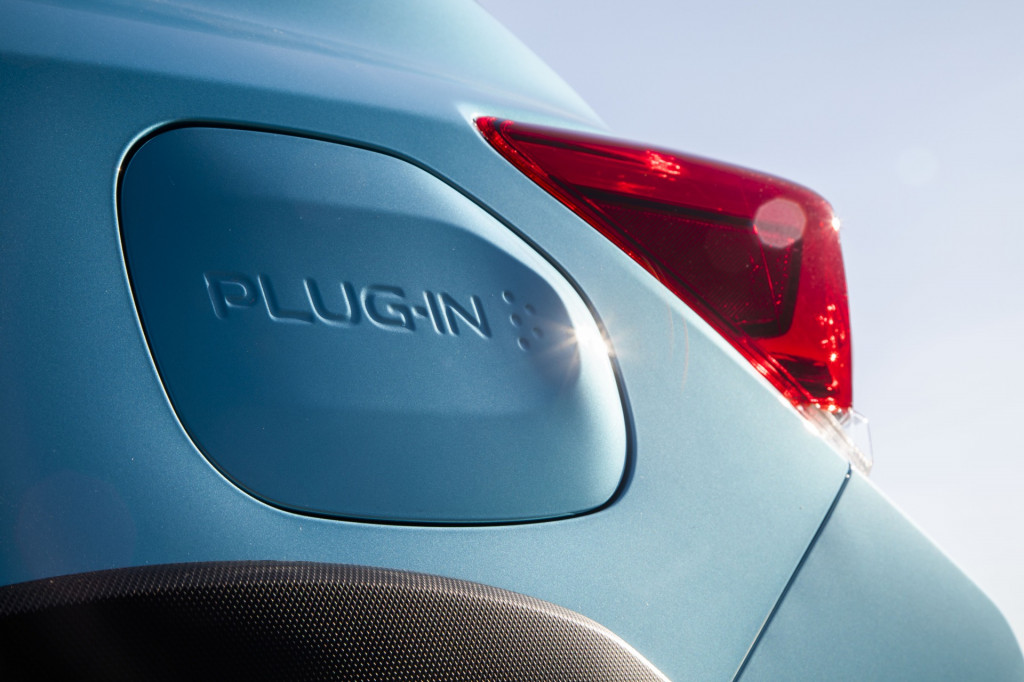Subaru on Wednesday announced plans to double the number of EV models it will offer later in the decade, boosting it from four to eight.
It’s part of an accelerated intent to shift to EVs and hybrids, including U.S. production, with a goal of 50% of its sales to be fully electric by 2030, up from a previous target of 40%.
Subaru also appears to suggest that by 2030 it’s aiming for all (or nearly all) of its lineup to be either battery electric or hybrid vehicles, adding up to an anticipated 1.2 million vehicles or more divided between Japan and the U.S.

Subaru 50% EVs by 2030
These pieces together amount to Subaru’s most important product and strategy announcements in a decade. They were called out in a “Briefing on the New Management Policy."
As part of the Wednesday presentation, coordinated with a quarterly financial update, the automaker laid out its plans for production in Japan as well as the U.S. In 2025 it aims to introduce both a next-generation hybrid model and its first in-house fully electric model, with Japan-based production targeted for 200,000 units per year in that model’s future. Around 2027 it will add a dedicated EV production line at its Gunma complex in Japan, eventually boosting its EV capacity by another 200,000 vehicles per year.

Subaru EV and hybrid roadmap - August 2023
In the U.S., next-generation hybrid production will ramp up in 2026 or 2027, with U.S.-based EV production due to start in 2027.
Subaru called out production as U.S.-based, not the “North American” terms used by automakers intending to take production to Mexico. It also points to a dedicated EV plant in Japan, plus production revamped around Monozukuri Manufacturing innovation, a Japanese way of coordinating craftsmanship and manufacturing. It intends to restructure how it builds vehicles, “all the way from the production structure to the development process and product planning.”

Subaru accelerates EV targets - August 2023
What this will amount to, Subaru summed, is four additional EVs, versus what had originally been planned—for a total of eight battery electric models by the end of 2028. Subaru now plans a total of four electric SUVs, by the end of 2026, plus the four additional EVs within the two years following that.
One of those initial four EVs is the Solterra, a model that is nearly identical to the Toyota bZ4X. Subaru’s input went primarily toward these vehicles’ traction systems, but in many respects they feel more like Toyotas, so with its next EV Subaru may truly be setting the roadmap for a new generation of its vehicles.
The only other plug-in Subaru for the U.S. has been the Crosstrek Hybrid, a plug-in hybrid that goes 17 electric miles and gets 35 mpg combined as a hybrid. It also borrowed extensively from Toyota. The Crosstrek Hybrid is still available for 2023 but is discontinued for 2024.

2019 Subaru Crosstrek Hybrid - First Drive, Santa Barbara CA, Nov. 2019
The U.S. is by far Subaru’s most significant market—well beyond its home market of Japan. Subaru produced nearly 850,000 vehicles globally in 2022, and it sold nearly 557,000 vehicles in the U.S. A large portion of those were made at its Indiana plant, which has made more than five million Subarus and more than seven million vehicles including Isuzu models formerly built there.
EVs currently amount to about 1% of Subaru’s U.S. sales. It reported sales of less than 3,000 Solterras in the first half of 2023.

Panasonic batteries
Subaru also earlier this week announced a move that will help backstop this stepped-up EV production. Like Mazda, it recently started talks with battery-maker Panasonic “to build a medium- to long-term partnership to meet demand for battery electric vehicles (BEVs) and automotive batteries in a rapidly expanding market,” according to the automaker.
Panasonic Energy will supply Subaru with “next-generation automotive cylindrical batteries” for those EVs in the latter half of the decade at multiple sites.













